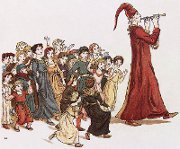Gerard Manley Hopkins, selected poems Contents
- Introduction
- Timeline
- Images
- Author(s)
- The context of writing
- Religious / philosophical context Show more
- Literary context Show more
- Hopkins' beliefs about religion and poetry Show more
- Poems for study
- As Kingfishers Catch Fire Show more
- Binsey Poplars Show more
- The Blessed Virgin Mary Compared to the Air We Breathe Show more
- Carrion Comfort Show more
- Duns Scotus' Oxford Show more
- God's Grandeur Show more
- Harry Ploughman Show more
- Henry Purcell Show more
- Hurrahing in Harvest Show more
- Inversnaid Show more
- I Wake and Feel the Fell of Dark Show more
- Synopsis of I Wake and Feel the Fell of Dark
- Commentary on I Wake and Feel the Fell of Dark
- Language and tone in I Wake and Feel the Fell of Dark
- Structure and versification in I Wake and Feel the Fell of Dark
- Imagery and symbolism in I Wake and Feel the Fell of Dark
- Themes in I Wake and Feel the Fell of Dark
- The Leaden Echo and the Golden Echo Show more
- Synopsis of The Leaden Echo and the Golden Echo
- Commentary on The Leaden Echo and the Golden Echo
- Language and tone in The Leaden Echo and the Golden Echo
- Structure and versification in The Leaden Echo and the Golden Echo
- Imagery and symbolism in The Leaden Echo and the Golden Echo
- Themes in The Leaden Echo and the Golden Echo
- The May Magnificat Show more
- My Own Heart, Let Me Have More Pity On Show more
- Synopsis of My Own Heart, Let Me Have More Pity On
- Commentary on My Own Heart, Let Me Have More Pity On
- Language and tone in My Own Heart, Let Me Have More Pity On
- Structure and versification in My Own Heart, Let Me Have More Pity On
- Imagery and symbolism in My Own Heart, Let Me Have More Pity On
- Themes in My Own Heart, Let Me Have More Pity On
- No Worst, There is None Show more
- Patience, Hard Thing! Show more
- Pied Beauty
- The Sea and the Skylark Show more
- Spelt from Sibyl's Leaves Show more
- Spring Show more
- Spring and Fall Show more
- St. Alphonsus Rodriguez Show more
- The Starlight Night Show more
- That Nature is a Heraclitean Fire and of the Comfort of the Resurrection Show more
- Synopsis of That Nature is a Heraclitean Fire
- Commentary on That Nature is a Heraclitean Fire
- Language and tone in That Nature is a Heraclitean Fire
- Structure and versification in That Nature is a Heraclitean Fire
- Imagery and symbolism in That Nature is a Heraclitean Fire
- Themes in That Nature is a Heraclitean Fire
- Thou Art Indeed Just, Lord Show more
- Tom's Garland Show more
- To Seem the Stranger Show more
- To What Serves Mortal Beauty Show more
- The Windhover Show more
- The Wreck of the Deutschland Show more
- Themes and significant ideas
- Beauty and its purpose
- The beauty, variety and uniqueness of nature
- Christ's beauty
- Conservation and renewal of nature
- God's sovereignty
- The grace of ordinary life
- Mary as a channel of grace
- Nature as God's book
- Night, the dark night of the soul
- Serving God
- Suffering and faith
- The temptation to despair
- The ugliness of modern life
- Understanding evil in a world God has made
- Critical analysis
- Approaching exams and essays
- Appendices
- Resources and further reading
Commentary on Pied Beauty
Variety
 The ‘pied' of the title means multi-coloured, as in the ‘Pied Piper of Hamelin'. The poem is a celebration of the variety of colour in nature, especially within discrete items of nature. Another term for this is ‘dappled', referring to the shapes of colour. Hopkins creates further vocabulary for the same concept of variety in the octave, listing all sorts of examples: cows, trout, chestnuts, finches, then finishing up with two major categories: landscape and trade.
The ‘pied' of the title means multi-coloured, as in the ‘Pied Piper of Hamelin'. The poem is a celebration of the variety of colour in nature, especially within discrete items of nature. Another term for this is ‘dappled', referring to the shapes of colour. Hopkins creates further vocabulary for the same concept of variety in the octave, listing all sorts of examples: cows, trout, chestnuts, finches, then finishing up with two major categories: landscape and trade.
In the sestet, he affirms that all this combination of colour and shape, of opposites in general- ‘swift, slow' or ‘sweet, sour' are all part of God's creative design. God fathers all such variety and therefore deserves the ultimate praise.
Investigating Pied Beauty
- Work out in what ways the following are varied:
- ‘finches' wings'
- ‘Landscape'
- ‘all trades'.
- Have you ever thought of freckles as being fascinating?
- Is our view of human beauty too much bound up with uniformity, do you think (e.g. the ‘clear' complexion)?
- Can you think of other items Hopkins might have included in his list?
The Bible describes God as the unique supreme being, creator and ruler of the universe.
Recently Viewed
Related material
- Texts
- Pied Beauty
Scan and go
Scan on your mobile for direct link.